
Do you have a question about the ZyXEL Communications VMG1312-B Series and is the answer not in the manual?
| Brand | ZyXEL Communications |
|---|---|
| Model | VMG1312-B Series |
| Category | Gateway |
| Language | English |
General introduction to the VMG1312-B Series VDSL router and its capabilities.
Describes methods for managing the device, including Web Configurator and TR-069.
Provides recommendations for enhancing device security and effective management.
Details various uses and applications of the device, such as internet access.
Explains how the device provides shared internet access via DSL or modem.
Discusses the device's USB port functionality for file sharing and media server.
Explains the indicators and status of the device's LEDs.
Details how to use the reset button to restore factory default configurations.
Explains the device's function as a wireless access point for client connections.
Introduces the web-based management interface for device setup and management.
Provides steps to access the web configurator, including default login credentials.
Describes the main parts of the web configurator interface: title bar, main window, and navigation panel.
Outlines the purpose of Quick Start screens for configuring time zone, internet, and wireless settings.
Guides the user through the initial device setup wizard for basic configurations.
Introduces the chapter, which demonstrates various features of the device.
Provides a tutorial on configuring the internet connection using the Web Configurator.
Explains how to set up a secure wireless network using WPS or manual configuration.
Details how to create multiple wireless network groups with different SSIDs and security modes.
Shows how to configure static routing rules for network traffic direction.
Explains how to configure Quality of Service (QoS) for prioritizing traffic like email.
Describes how to use Dynamic DNS to access the device via a domain name with a dynamic IP.
Explains how to grant or deny wireless access based on MAC addresses.
Demonstrates using an FTP program to access files on a USB device connected to the router.
Explains how to use the device as a media server for playing files on network clients.
Details how to share a USB printer connected to the device on the LAN.
Introduces the Network Map and Status screens for viewing network connection status.
Introduces the Network Map and Status screens for viewing network connection status.
Explains how to view network connection status of the device and its clients.
Guides on viewing the device's status, system resources, and interfaces (LAN, WAN, WLAN).
Discusses Broadband screens for configuring internet access and WAN connections.
Lists tasks related to configuring Broadband, including WAN interfaces and 3G backup.
Explains how to change internet access settings and view configured WAN services.
Guides on enabling or disabling PTM over ADSL, Annex M/J, and DSL PhyR functions.
Details how to view and configure 802.1x authentication settings.
Introduces the Wireless screens for setting up the device's wireless connection.
Lists tasks for setting up wireless connection, including General, More AP, MAC Authentication.
Provides background information on wireless basics and finding out more about wireless networks.
Explains enabling Wireless LAN, setting SSID, and selecting security mode.
Allows enabling and configuring multiple Basic Service Sets (BSSs) on the device.
Explains configuring the device to grant or deny access based on MAC addresses.
Guides on configuring WiFi Protected Setup (WPS) for quick wireless network setup.
Discusses enabling Wi-Fi MultiMedia (WMM) and WMM Power Save for multimedia applications.
Allows configuring Wireless Distribution System (WDS) links between the device and other APs.
Covers advanced wireless settings like RTS/CTS Threshold and Fragmentation Threshold.
Explains scanning wireless LAN channels for noise and viewing results.
Introduces Local Area Network (LAN) concepts and how the device helps configure it.
Lists tasks related to LAN setup, static DHCP, UPnP, Additional Subnet, and LAN VLAN.
Guides on setting the LAN IP address, subnet mask, and DHCP settings of the device.
Explains assigning IP addresses to specific computers based on MAC addresses using static DHCP.
Details configuring UPnP settings for peer-to-peer network connectivity and NAT traversal.
Covers configuring IP alias and public static IP for network segmentation.
Explains setting up static DHCP entries for Set Top Box (STB) devices by Vendor ID.
Describes controlling VLAN ID and IEEE 802.1p priority tags for LAN ports.
Explains how the device routes outbound traffic using default gateways and static routes.
Lists tasks for configuring static routes and policy routing.
Guides on viewing and configuring static route rules on the device.
Details how to add or edit static route rules for network traffic.
Explains configuring policy routing to override default routing behavior.
Introduces Quality of Service (QoS) for managing network traffic delay and bandwidth.
Lists QoS configuration tasks including General, Queue Setup, Class Setup, Policer Setup, Monitor.
Guides on enabling/disabling QoS and setting upstream bandwidth.
Explains how to configure QoS queue assignments for traffic prioritization.
Details adding, editing, or deleting QoS classifiers to group traffic flows.
Guides on configuring QoS policers to limit incoming traffic transmission rates.
Explains how to view the device's QoS-related packet statistics.
Discusses configuring NAT for translating IP addresses between networks.
Lists NAT configuration tasks: Port Forwarding, Applications, Port Triggering, DMZ, ALG, Address Mapping.
Explains NAT terminology like Inside/Outside and Global/Local.
Guides on forwarding incoming service requests to local network servers.
Provides a summary of NAT applications and allows creating new rules.
Explains configuring trigger port settings for dynamic service access.
Guides on configuring a default server to receive packets not specified in port forwarding.
Details enabling/disabling the NAT and SIP Application Layer Gateway (ALG).
Covers configuring device address mapping settings for network access.
Introduces DNS and Dynamic DNS services for mapping domain names to IP addresses.
Lists tasks for configuring DNS routes and Dynamic DNS settings.
Guides on viewing and configuring DNS routes on the device.
Details changing device DDNS settings and configuring DDNS.
Explains interface groups for creating multiple networks on the device.
Lists tasks for creating multiple networks using Interface Group screens.
Guides on manually adding LAN interfaces to groups or automatic addition via DHCP Vendor ID.
Details creating new interface groups by selecting WAN and LAN interfaces.
Introduces the device's USB port for sharing files, media, and printers.
Lists tasks for file sharing, media server, and printer server setup.
Provides terms and concepts related to USB service, including File Sharing, Printer Server, OS, TCP/IP, and Ports.
Guides on sharing files from a USB memory stick or hard drive on the network.
Explains how to enable the media server feature for playing media files from USB devices.
Details how to share a USB printer connected to the device on the LAN.
Discusses enabling and configuring the device's firewall for security and access control.
Lists firewall configuration tasks: General, Service, Access Control, DoS.
Explains common firewall attacks like SYN Attack, DoS, DDoS, LAND Attack, Ping of Death, and SPI.
Guides on setting the firewall's security level and packet travel direction rules.
Covers configuring customized services and port numbers for firewall rules.
Displays configured incoming or outgoing filtering rules for network traffic.
Guides on activating protection against Denial of Service (DoS) attacks.
Explains configuring the device to permit access based on MAC addresses.
Guides on allowing or denying wireless and LAN clients access based on MAC addresses.
Explains blocking websites by URL and defining time periods for parental control.
Guides on enabling parental control, viewing rules, and schedules.
Explains defining time periods and days for scheduled rules like Firewall Access Control.
Guides on viewing, adding, or editing time schedule rules.
Discusses using certificates for authenticating users and exchanging public keys.
Lists tasks for managing Local Certificates and Trusted CA certificates.
Provides a summary list of certificates and certification requests.
Displays a summary list of trusted certification authorities.
Explains choosing log categories and displaying logs or sending them via email.
Lists tasks for viewing System Log and Security Log.
Guides on viewing system logs, filtering by level and category, and exporting logs.
Explains viewing security-related logs and their categories.
Introduces viewing network traffic status and statistics for WAN and LAN interfaces.
Lists tasks for viewing WAN and LAN traffic statistics.
Guides on viewing WAN traffic statistics, including packets sent and received.
Explains viewing LAN and WLAN traffic statistics for interfaces.
Introduces Address Resolution Protocol (ARP) for mapping IP to MAC addresses.
Explains the ARP process of mapping IP addresses to MAC addresses on a local network.
Guides on viewing IP-to-MAC address mappings in the ARP table.
Explains how the device routes outbound traffic using default gateways and static routes.
Guides on viewing and configuring static route rules on the device.
Introduces looking at IGMP group status and traffic statistics.
Guides on viewing multicast groups joined by the device and their ports.
Explains viewing detailed DSL statistics for connection performance.
Introduces changing the user account password for device login.
Guides on changing the system password for device login.
Explains managing the device remotely via LAN, WAN, and Trust Domain interfaces.
Guides on configuring which interfaces and services can be used for remote management.
Explains configuring TR-069 auto-configuration settings for device management.
Guides on configuring the device for management by an Auto Configuration Server (ACS).
Explains configuring TR-064 auto-configuration settings for device management.
Guides on activating LAN-side CPE management via TR-064.
Introduces configuring system settings like system time, password, name, and inactivity timeout.
Guides on configuring the device's time zone and Daylight Saving Time settings.
Explains specifying email server and addresses for sending reports, logs, and notifications.
Guides on viewing, removing, and adding mail server information for email notifications.
Explains configuring where the device sends logs and which logs/alerts are recorded.
Guides on configuring log settings, including syslog and email notification options.
Explains uploading new firmware to upgrade the device's performance.
Guides on uploading firmware files to upgrade the device.
Introduces backing up, restoring, and resetting device configurations.
Guides on backing up and restoring device configurations, and resetting to factory defaults.
Introduces diagnostic screens to help identify device problems.
Lists diagnostic tasks: Ping & TraceRoute & NsLookup, 802.1ag, OAM Ping Test.
Guides on pinging, tracerouting, or nslooking an IP address to test connectivity.
Explains performing Connectivity Fault Management (CFM) actions using 802.1ag.
Guides on performing OAM F4 or F5 loopback tests on a PVC for connectivity verification.
Introduces suggestions for solving potential device problems categorized by issue type.
Provides troubleshooting steps for power issues and LED behavior.
Offers solutions for issues related to forgetting IP addresses or passwords, and accessing the login screen.
Provides troubleshooting steps for issues accessing the internet via DSL or wirelessly.
Discusses factors causing intermittent wireless connections and optimization tips.
Offers troubleshooting steps for when the device fails to detect a USB device.
Provides troubleshooting steps for issues related to UPnP detection after device reboot.
Guides on configuring TCP/IP settings for Windows 95/98/Me.
Details configuring TCP/IP settings for Windows 2000/NT/XP using GUI.
Explains configuring TCP/IP settings for Windows Vista.
Guides on configuring TCP/IP settings for Red Hat Linux 9.0 using KDE.
Introduces IP addresses, network numbers, and host IDs.
Explains the structure of an IP address as four octets.
Details how subnet masks determine network and host ID portions of an IP address.
Explains how network number size determines the maximum number of possible hosts.
Guides on obtaining IP addresses from ISPs, private networks, or administrators.
Explains disabling or allowing pop-up blockers in Internet Explorer.
Guides on allowing pop-up windows from specific devices by adding exceptions.
Advises checking JavaScript settings if web pages do not display correctly.
Instructs on ensuring safety levels are selected for Java permissions in Internet Explorer.
Discusses ad-hoc and infrastructure wireless LAN topologies.
Explains setting up an independent WLAN connecting computers with wireless adapters.
Defines a Basic Service Set (BSS) and intra-BSS traffic.
Describes an Extended Service Set (ESS) and infrastructure WLAN topology.
Explains radio frequencies and channels used by wireless devices, and interference reduction.
Details RTS/CTS handshake for preventing collisions due to hidden nodes.
Covers IEEE 802.11g compatibility, data rates, and modulation.
Emphasizes the importance of wireless security and its methods.
Explains the IEEE 802.1x standard for extended authentication and accounting.
Describes the RADIUS client-server model for authentication, authorization, and accounting.
Discusses popular EAP authentication types like EAP-MD5 and EAP-TLS.
Explains EAP-TTLS authentication using certificates for server-side authentication.
Describes PEAP authentication using server-side certificates and username/password.
Mentions LEAP as a Cisco implementation of IEEE 802.1x.
Explains how the AP maps unique keys from the RADIUS server for WEP.
Compares WPA and WPA2 standards for stronger encryption and authentication.
Details WPA encryption improvements using TKIP, MIC, and AES.
Explains WPA/WPA2 using RADIUS for user authentication and key exchange.
Discusses the software that instructs wireless clients on how to use WPA.
Introduces IPv6 for enhanced IP address size and features.
Explains the 128-bit IPv6 address format and abbreviations.
Defines IPv6 prefix length for network address representation.
Describes link-local addresses for unique device identification on the LAN.
Defines global addresses as unique identifiers for devices on the Internet.
Explains unspecified addresses used when a device lacks its own address.
Describes loopback addresses for sending packets to oneself.
Explains IPv6 multicast addresses for sending packets to groups.
Describes DHCP relay agents that help forward messages between DHCP clients and servers.
Explains how IPv6 routers use prefix delegation for LAN IP address generation.
Defines ICMPv6 for reporting errors and performing diagnostic functions.
Explains NDP for discovering IPv6 devices and tracking neighbor reachability.
Shows how to enable IPv6 and use ipconfig for auto-generated IP addresses.
Guides on installing a DHCPv6 client for IP address assignment in Windows XP.
Lists commonly used services with their associated protocols and port numbers.
States copyright information and reproduction restrictions for the publication.
Disclaims liability for product application, use, or changes without notice.
Includes FCC Interference Statement regarding device operation and interference.
Provides statements on transmitter co-location, U.S. firmware limitations, and FCC RF exposure compliance.
Warns about modifications voiding authority and EU/Swiss WLAN restrictions.
Details the warranty period and terms for product defects in materials or workmanship.
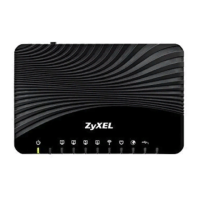

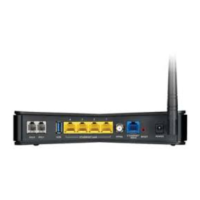
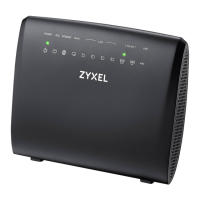
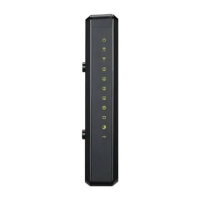



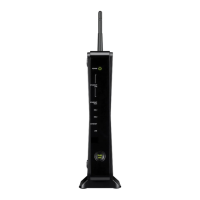
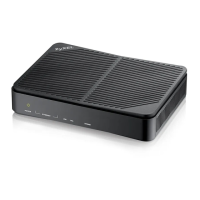
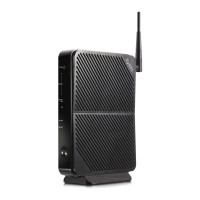

